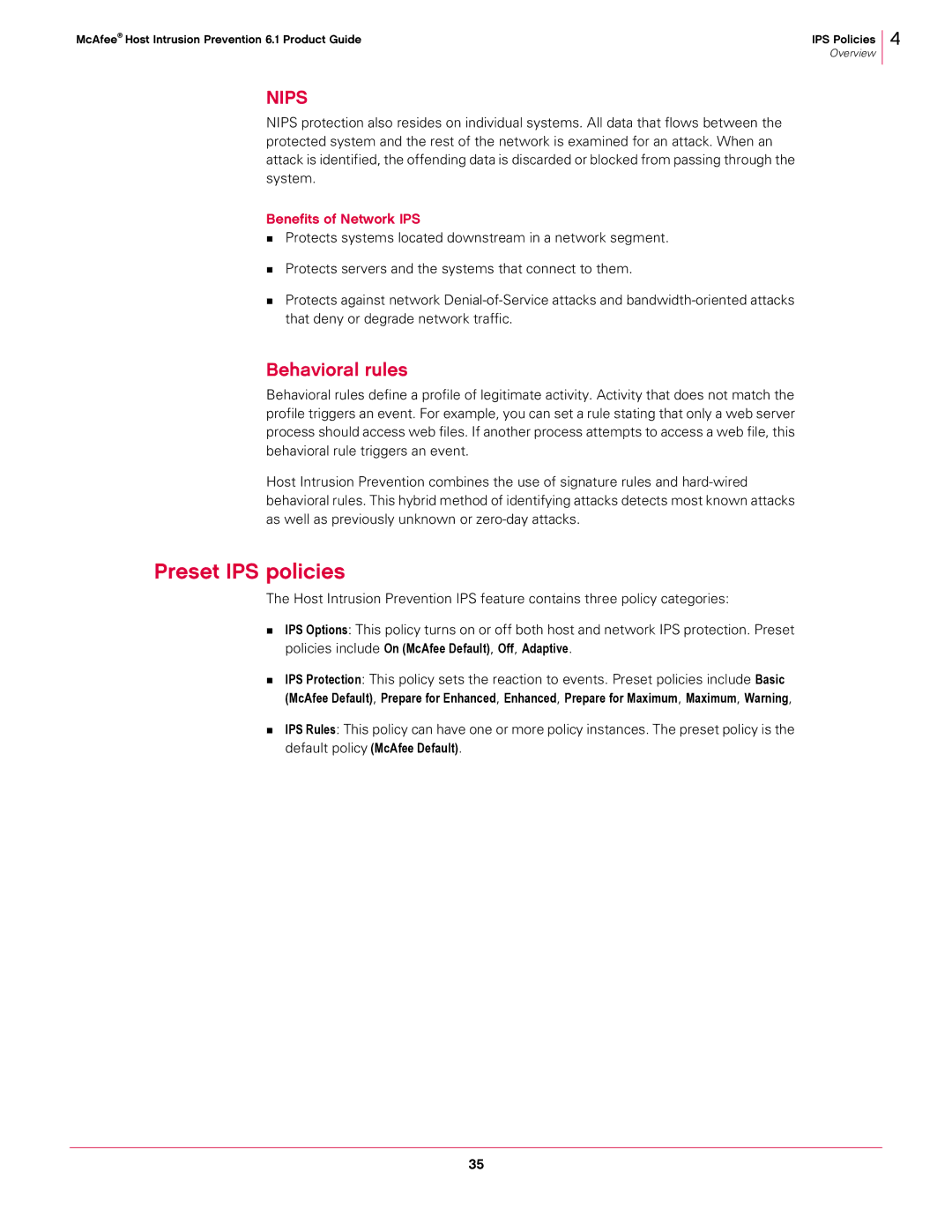
McAfee® Host Intrusion Prevention 6.1 Product Guide | IPS Policies |
| Overview |
NIPS
NIPS protection also resides on individual systems. All data that flows between the protected system and the rest of the network is examined for an attack. When an attack is identified, the offending data is discarded or blocked from passing through the system.
Benefits of Network IPS
Protects systems located downstream in a network segment.
Protects servers and the systems that connect to them.
Protects against network
4
Behavioral rules
Behavioral rules define a profile of legitimate activity. Activity that does not match the profile triggers an event. For example, you can set a rule stating that only a web server process should access web files. If another process attempts to access a web file, this behavioral rule triggers an event.
Host Intrusion Prevention combines the use of signature rules and
Preset IPS policies
The Host Intrusion Prevention IPS feature contains three policy categories:
IPS Options: This policy turns on or off both host and network IPS protection. Preset policies include On (McAfee Default), Off, Adaptive.
IPS Protection: This policy sets the reaction to events. Preset policies include Basic (McAfee Default), Prepare for Enhanced, Enhanced, Prepare for Maximum, Maximum, Warning,
IPS Rules: This policy can have one or more policy instances. The preset policy is the default policy (McAfee Default).
35
